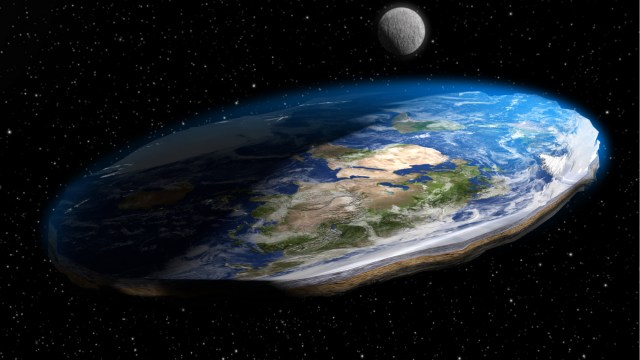No, Black Holes Will Never Consume The Universe
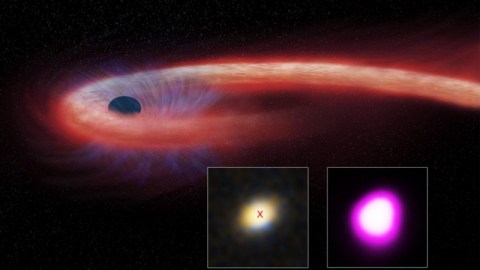
No matter how long you wait, the matter that makes you probably won’t end up inside a black hole.
It’s one of the most pervasive ideas out there: if you wait long enough, no matter what or where you are, you’ll eventually get consumed by a black hole. There are likely close to a billion black holes orbiting amidst the stars that revolve around our Milky Way, dominated by the supermassive black hole at our galactic center. If you allow enough time to pass and enough orbits to occur, you might think it’s an inevitability that everything will someday be consumed by a black hole.
Even if you managed to miss colliding with a black hole every single time, we know that gravitational waves cause all orbits to decay, eventually bringing you in contact with a black hole in the end. But this isn’t the only physics at play, and other processes turn out to be more important. Black holes won’t consume the Universe, after all. Here’s how we know.
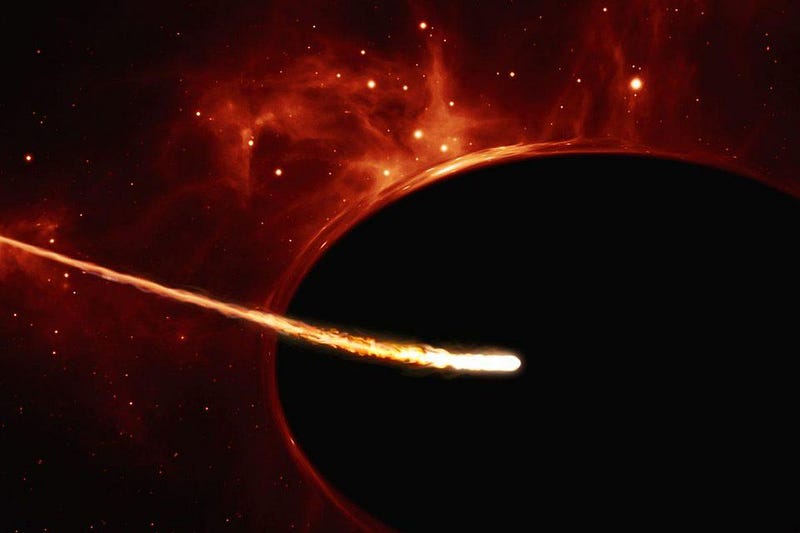
In any scientific endeavor, it’s never enough to simply demonstrate that a process can occur and then conclude that therefore it does occur. Instead, what you have to do is figure out, in a quantitative sense, how it occurs. This means determining the following:
- what conditions does it occur under,
- what is the rate at which it occurs,
- and what are the feedbacks and competing processes that can also occur.
Only if you put everything in context can you hope to figure out the probabilities and timescales for anything actually happening in our Universe. For any mass that isn’t sufficiently large to itself become a black hole, there are two things we need to consider to determine the probability of getting consumed by a black hole: randomly colliding with another black hole or gravitationally inspiraling to merge with a pre-existing black hole.
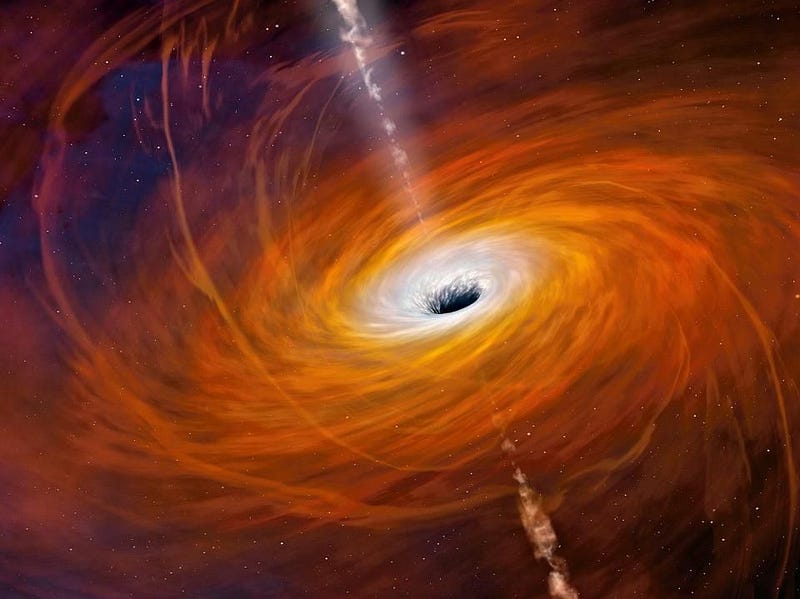
Our galaxy is spiral-shaped, with an extended thin disk and a large central bulge, containing some 400 billion stars inside of it. A little more than 0.1% of all the stars that ever form will wind up becoming black holes, most of them between about 4 and 40 solar masses. However, a few of them grow much larger: to many thousands of solar masses, topped by the supermassive black hole at our galactic center, containing 4 million solar masses.
Just based on random interactions as stars move through the galaxy, it’s exceedingly unlikely that a planet like Earth will have encountered a large, star-sized mass throughout the history of the Universe, much less a black hole. By today, the closest star (beyond our Sun) should have gotten no closer than ~500 times the Earth-Sun distance to us. We wouldn’t expect a black hole to come closer to the Earth than the Sun is until perhaps 10²⁰ years have gone by: some 10 billion times the present age of the Universe.
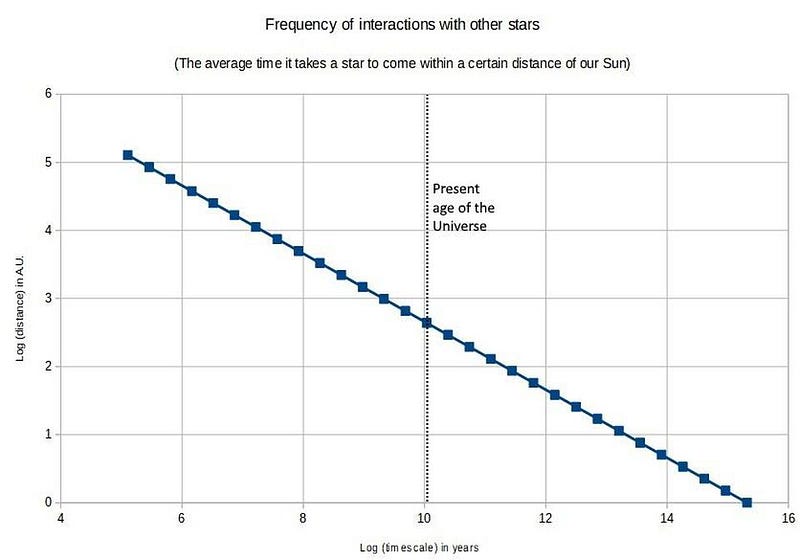
That’s a long time from now, but there’s another factor that’s at play: orbital decay from the emission of gravitational waves. The laws of General Relativity tell us that whenever a mass moves through curved space, it will emit gravitational radiation, causing it to lose energy and become more tightly bound to the mass causing the spatial curvature. Any two masses gravitationally bound together — whether they’re stars, white dwarfs, neutron stars, brown dwarfs, black holes, or even planets — will radiate their kinetic energy away until they eventually merge.
After 10²⁶ years have gone by, for example, the Earth will inspiral into (what’s left of) the Sun. On even longer timescales, the supermassive black hole at the galactic center will consume all the stars and other masses around it.
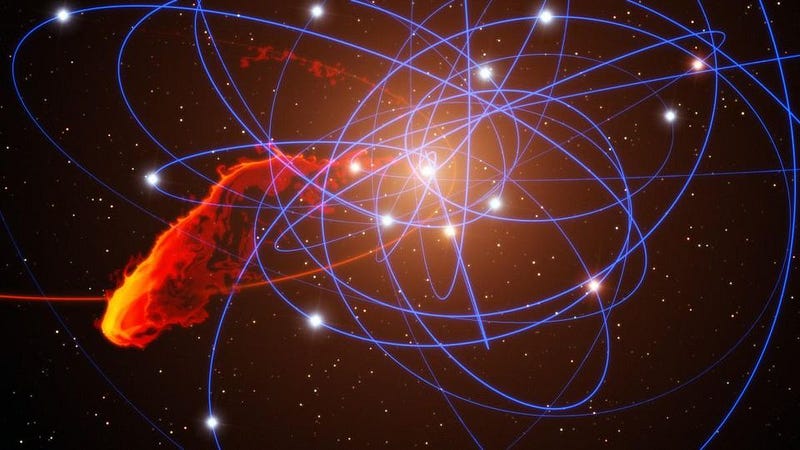
If this were all that were at play, black holes could consume the entire Universe. Practically every large galaxy has a supermassive black hole at its center, and whenever a black hole and another mass collide, the black hole not only survives, but gets more massive. Considering that every group and cluster of galaxies will eventually merge into one massive, enormous elliptical galaxy, it seems that black holes consuming the Universe is an inevitability.
You can imagine a scenario where this occurs. Eventually, the stars will burn out, the planets will spiral into their stellar corpses, and all these burned-out masses will eventually spiral into the black hole at the centers of galaxies. Give the Universe enough time, and only black holes will remain.
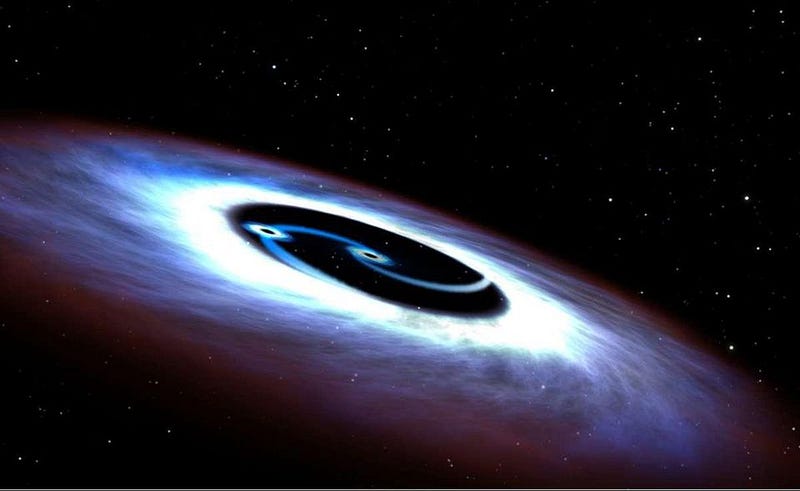
But that isn’t what happens at all. You can calculate how long it would take for all of this to occur, and although you get a very large answer — much, much longer than the present age of the Universe — it’s still a finite amount of time. If these were the only effects at play, perhaps black holes would consume the Universe, even if no one was left to observe it.
The way out of this fate, though, is to look at all the competing processes at play. There are other things that can occur between massive objects that would lead to a vastly different fate. If they happen on faster timescales and with higher frequencies than consumption-by-black-hole, then this alternative fate will be the one that most of the Universe encounters. Whether you think it’s fortunate or unfortunate is up to you, but doing the calculations clearly demonstrate that black holes won’t consume the Universe.
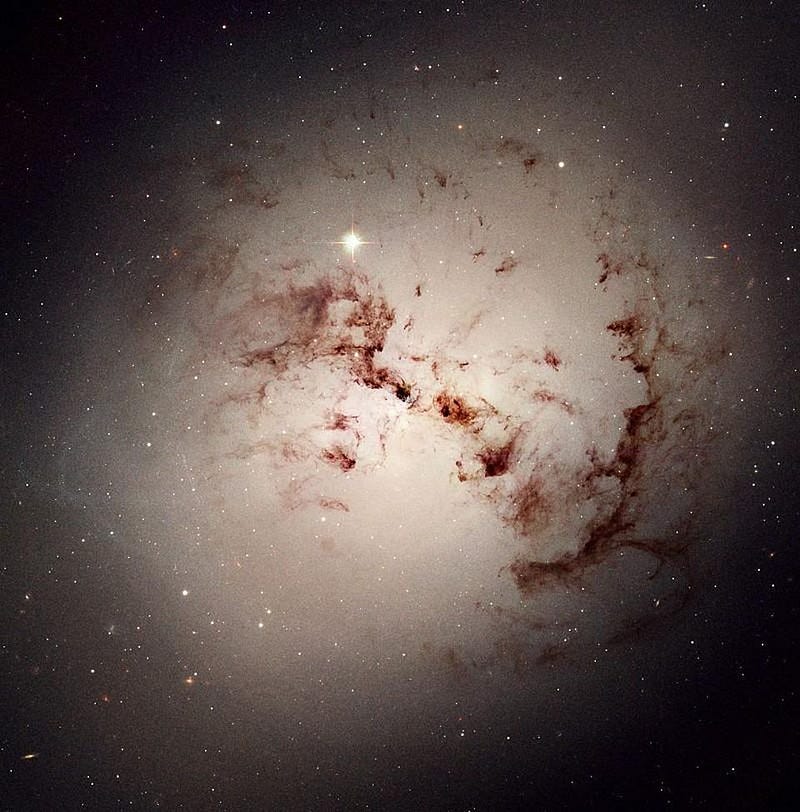
Wherever you have a galaxy, it’s bound to be filled with lots of masses that revolve around it owing to the force of gravity. These masses swarm through the galaxy, occasionally passing close by one another, gravitationally interacting when they do.
When two masses interact, they both attract one another, but what typically happens is that their orbits are both hyperbolic with respect to one another. That doesn’t mean that they exaggerate, but rather that they simply redirect one another’s velocities; they have the same incoming speeds as outgoing speeds, except in different directions. If all we had were two independent, unbound masses interacting with each other, this is what we’d expect. If the large mass is much, much larger than the smaller mass, in fact, its motion barely changes. Only the smaller one experiences a large-magnitude redirection.
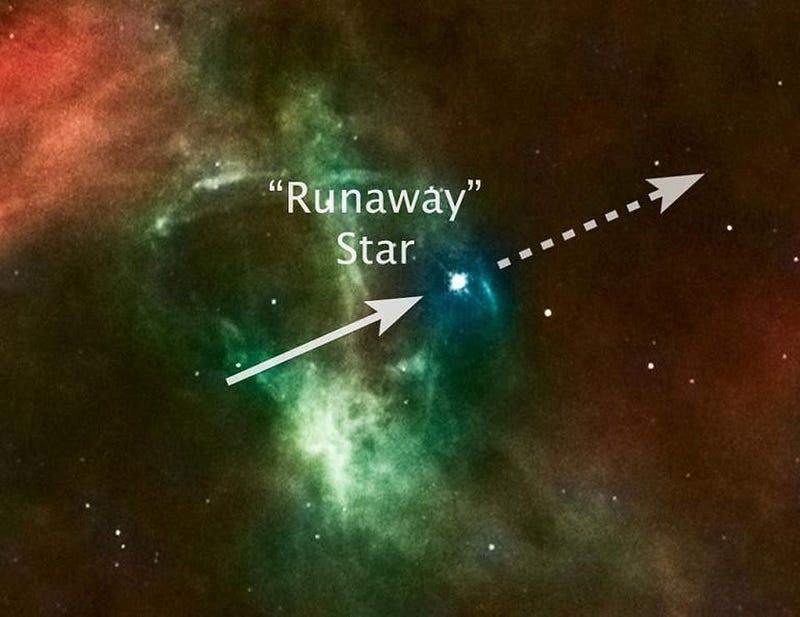
But these two masses, if they’re in a galaxy, aren’t exactly isolated. Instead, they’re bound to something much larger and more massive: the host galaxy itself. When you get a gravitational interaction between two masses that are both bound to a still more massive system, the story changes.
In general, it’s just like what happens when Jupiter encounters an asteroid where both are bound to the Sun: the larger mass (Jupiter) becomes slightly more tightly bound, but the smaller mass (the asteroid) becomes more loosely bound. In many such instances, the smaller mass will even get ejected in a process that scientists call violent relaxation. It makes you wonder, if you consider our Solar System, if we once had 9, 10, or even greater numbers of planets early on. Today, all we have left are the survivors.
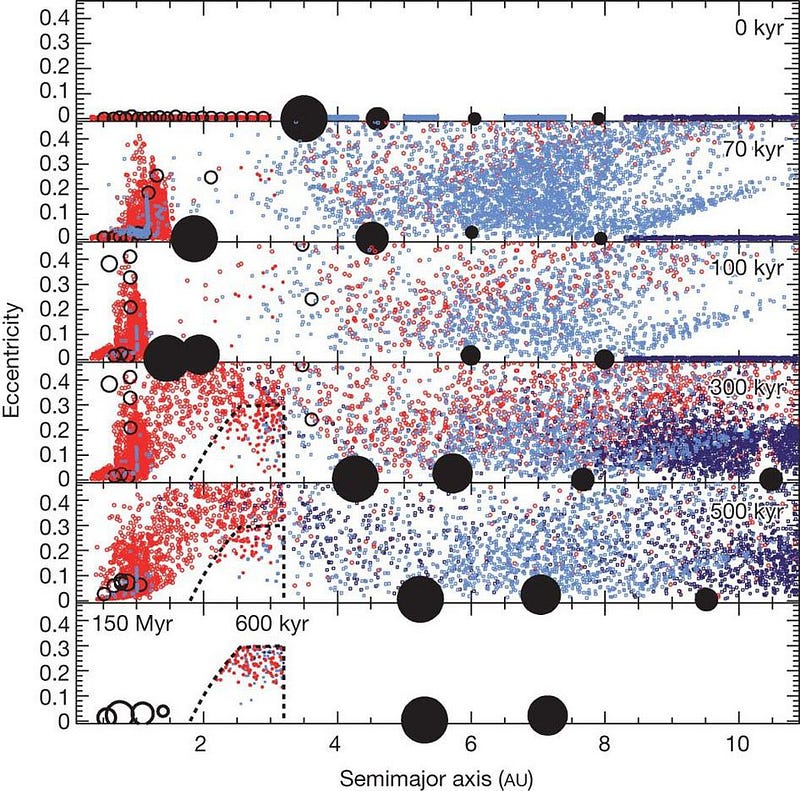
We can calculate, based on the masses we find in our galaxy and in all galaxies, how long we can expect stars, stellar corpses, and other masses to hang around. While black holes appear to have interesting effects on timescales of 10²⁰ years and longer, this ejection phenomenon is much more efficient. Approximately 10¹⁷ years from now, ejections will happen in earnest. By the time 10¹⁹ years have gone by, approximately 99% of all stars in all galaxies will have been ejected: flung into the intergalactic medium, where they’ll never encounter another galaxy, galactic group, or cluster again.
The overwhelming majority of the Universe will not be consumed by black holes, but rather flung into intergalactic space. Once there, they will wander the Universe as “runaway stars” (or stellar remnants) for as long as the Universe still exists.
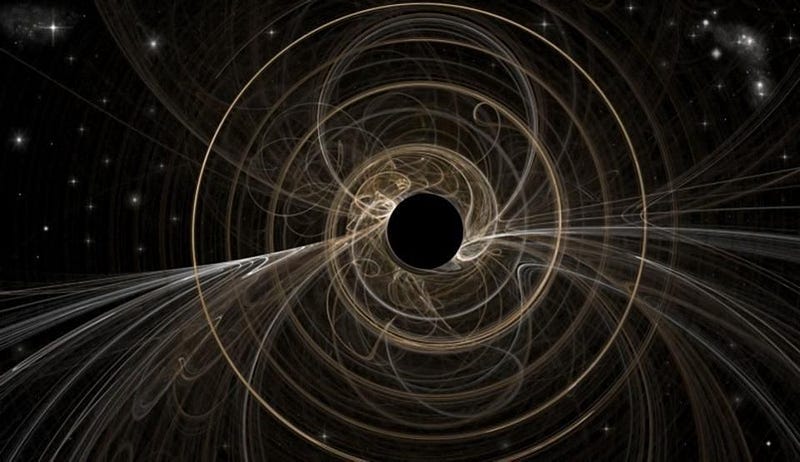
Yes, there will be a very, very small number of stars, planets, asteroids and more that do get consumed by black holes, but it will be less than 0.1% of all the matter presently in the Universe. Even dark matter will remain in the outskirts of galaxies, unable to be eaten by black holes.
You might think that after googols and googols of years, anything still present in a galaxy will eventually be consumed, but don’t forget about Hawking radiation: eventually, all the Universe’s black holes will decay, too. Before any substantial fraction of the remaining galactic matter — normal or dark — can be devoured, every black hole in the Universe will have completely decayed away. If something dear to you does fall into a black hole, don’t despair. Try waiting instead. If you’re clever enough, you’ll not only get its energy back again someday, but most likely its information, too.
Ethan Siegel is the author of Beyond the Galaxy and Treknology. You can pre-order his third book, currently in development: the Encyclopaedia Cosmologica.





